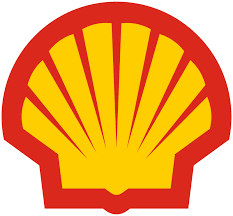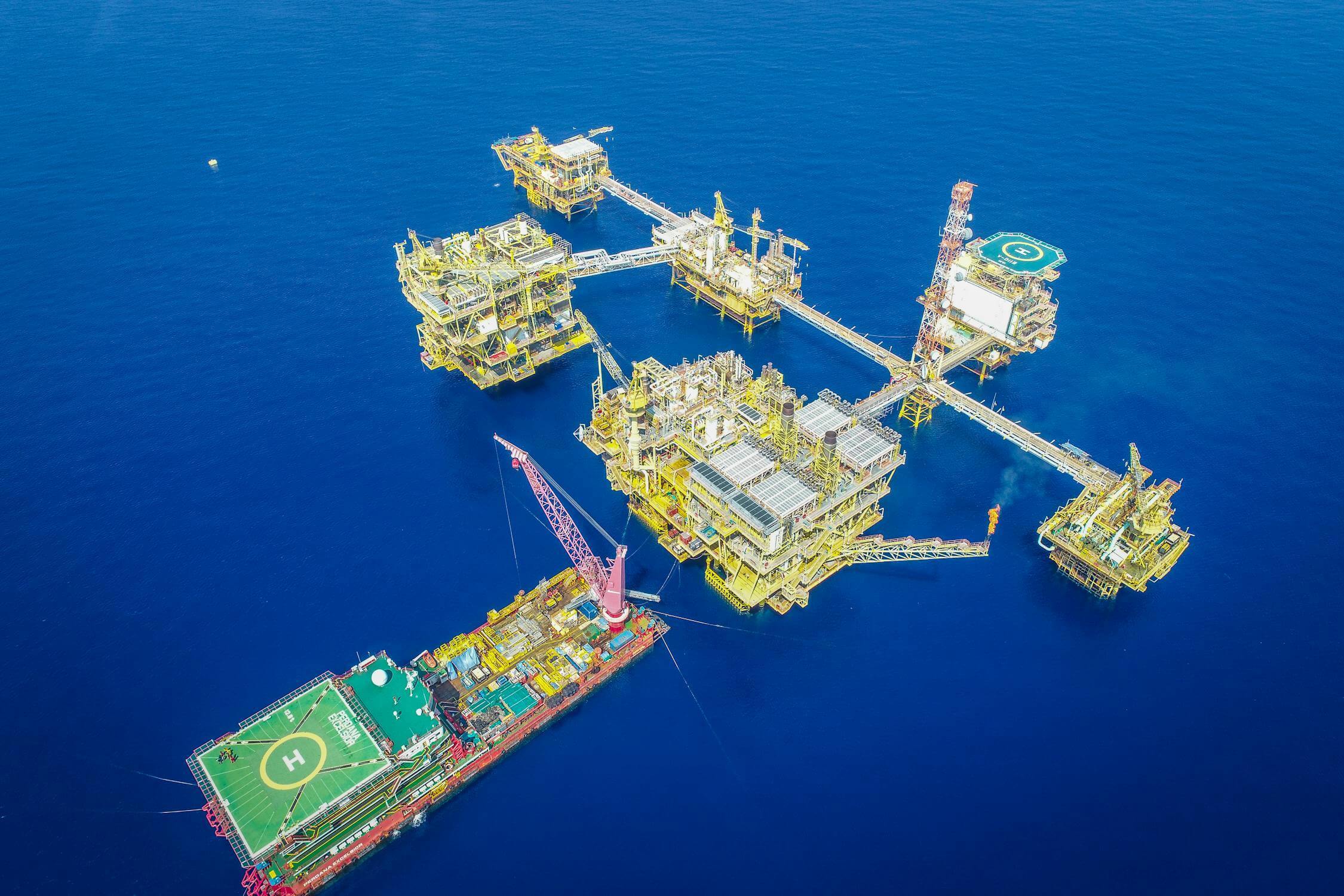Analysis & Opinions
Exploring Turkmenistan’s Gas Trade Across Eurasia
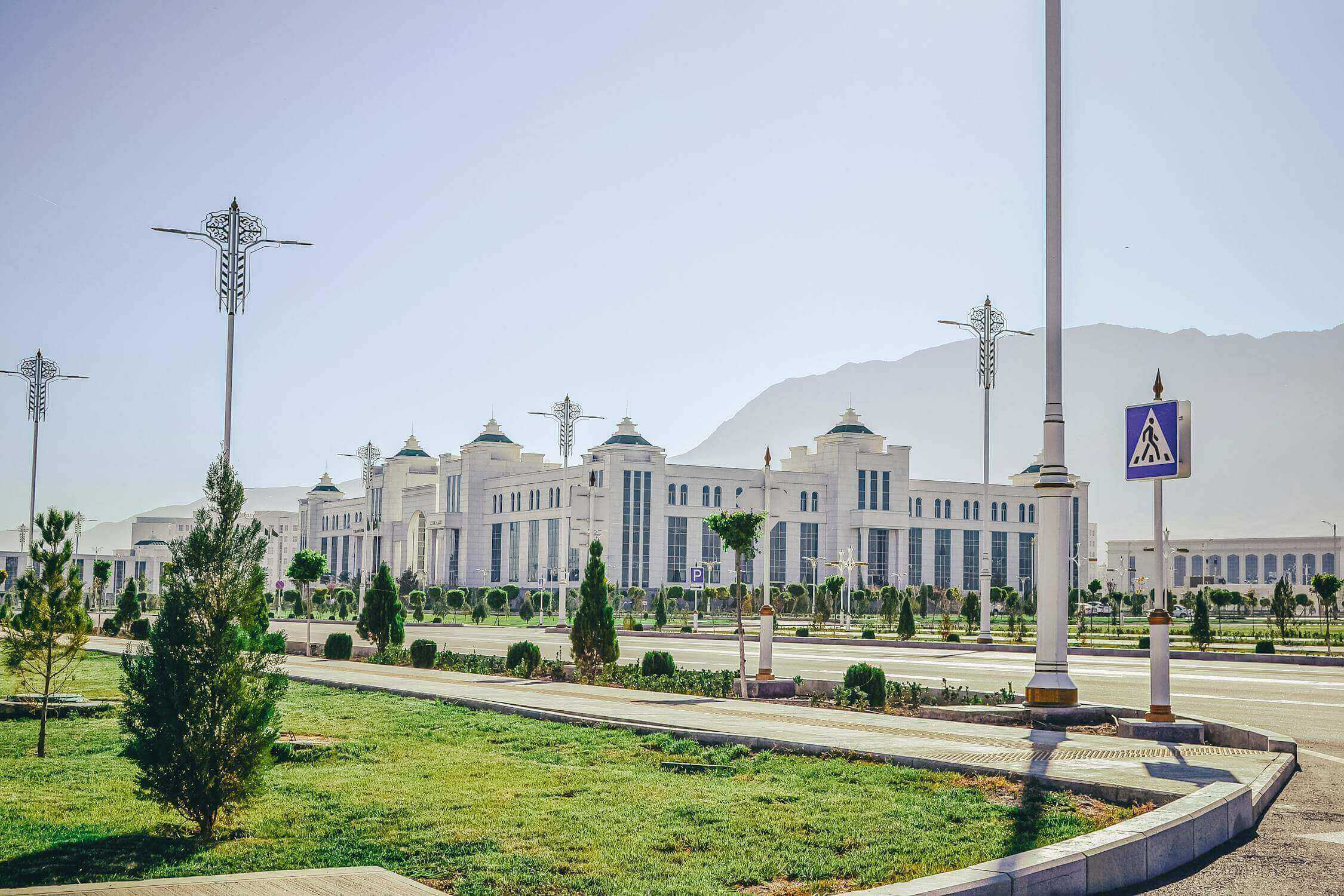
Due to its vast natural gas reserves, Turkmenistan plays a crucial role in gas trade across Eurasia.
The country is strategically positioned to supply gas to China, Russia, and Iran. In addition, it is exploring new markets in South Asia and Europe. Therefore, Turkmenistan gas is vital to Eurasia’s energy supply chains.
Turkmenistan Gas Reserves and Infrastructure
Turkmenistan is one of the world’s largest natural gas producers and exporters. As such, it plays a crucial role in Eurasia’s gas market.
The country holds the world’s 4th largest proven natural gas reserves, estimated at around 400 Trillion Cubic Feet (TCF), after Russia, Iran, and Qatar.
Gas Production Volumes
In 2024, Turkmenistan’s natural gas production reached about 77.6 billion cubic meters (BCM).
Turkmenistan produced 80.6 BCM of gas and exported about 39.5 BCM in 2023.
Therefore, about half of Turkmenistan’s natural gas production is exported, with China being the primary importer. China accounts for 75%-80% of Turkmenistan’s gas exports.
Key Gas Fields:
- Galkynysh Field: One of the largest gas fields in the world.
- Dauletabad Field: It was the largest gas-producing field before Galkynysh’s discovery.
- Bagtyyarlyk and South Yolotan Fields: Additional major fields boosting national production.
Pipeline Infrastructure:
Due to the country’s landlocked nature, Turkmenistan’s gas export network relies heavily on pipelines. Major pipelines include:
- Central Asia-China Gas Pipeline: This is the primary route for Turkmenistan gas exports to China.
- Length: Over 10,000 km
- Capacity: ~55 billion cubic meters (BCM) per year
- Route: Turkmenistan → Uzbekistan → Kazakhstan → China
- Operators: China National Petroleum Corporation, Türkmengaz, Uzbekneftegas,and KazMunayGas
- Central Asia–Center Gas Pipeline System: Supplies Turkmenistan gas to Russia.
- Length: 2,000 km
- Capacity: ~90 billion cubic meters (BCM) per year
- Route: Turkmenistan → Uzbekistan → Kazakhstan → Russia
- Operators: China National Petroleum Corporation, Gazprom, Türkmengaz, Uzbekneftegas and KazMunayGas
- Korpeje-Kurt Kui Pipeline: Supplies Turkmenistan gas to Iran.
- Length: 200 km
- Capacity: 8 billion cubic meters (BCM) per year
- Route: Korpeje Gas Field (Balkan Province, Turkmenistan) → Kurt-Kui (Golestan Province, Iran)
- Operator: Turkmengaz (Turkmenistan), National Iranian Gas Company (NIGC) (Iran)
- East-West Pipeline: A domestic pipeline designed to facilitate future exports to Europe.
- Length: 773 km
- Capacity: 30 billion cubic meters (BCM) per year
- Route: Shatlyk (Mary Province, east) → Belek (Balkan Province, west)
- Operator: Turkmengaz
Key Export Markets of Turkmenistan’s Gas in Eurasia
China (Largest Buyer of Turkmenistan Gas in Eurasia)
China is Turkmenistan’s largest gas importer. In 2024, Turkmenistan supplied China with about 32.5–33.5 BCM of gas. Therefore, China accounts for 70% of Turkmenistan’s gas exports. Turkmenistan exports most of its natural gas to China through the Central Asia-China Gas Pipeline.
Russia (A Historical Partner)
Russia was once Turkmenistan’s top gas importer. However, due to pricing disputes, Russia reduced its purchases after 2009 and reached zero in 2016. In 2019, Russia resumed imports through the Central Asia-Center (CAC) pipeline. In 2024, Russia imported about 31 BCM of Turkmen gas. Russia uses Turkmen gas to meet domestic demand and re-export some to Europe.
Iran (Limited Partner in Eurasia)
Iran historically imports small volumes of Turkmen gas (5-6 BCM annually) to supply its northern regions. However, Turkmenistan halted gas exports in January 2017 due to payment disputes with Iran.
Potential Future Markets For Turkmenistan Gas Exports
Europe
The European Union is keen to diversify its gas sources and reduce dependence on Russian supplies; Turkmenistan is an attractive option.
Turkmenistan, possessing the world’s fourth-largest natural gas reserves, has historically focused its gas exports towards Russia and China.
However, in recent years, the country has initiated efforts to diversify its export markets, mainly to supply natural gas to Europe.
To achieve diversification, Turkmenistan proposes the Trans-Caspian Subsea Gas Pipeline. The pipeline will transport natural gas from Turkmenistan to Azerbaijan, traversing the Caspian Sea and linking it with the Southern Gas Corridor to Europe.
South Asia
Endowed with substantial natural gas reserves, Turkmenistan has been actively seeking to diversify its export markets beyond traditional partners like China and Russia. A key plan is to export gas to South Asian nations, especially India, via the Turkmenistan-Afghanistan-Pakistan-India (TAPI) pipeline.
Alternative Gas Export Routes
Turkmenistan-Afghanistan-Pakistan-India (TAPI) Pipeline
- Route and Capacity: The TAPI pipeline will span about 1,814 kilometres, originating from the Galkynysh gas field in Turkmenistan, passing through Afghanistan and Pakistan, and terminating in Fazilka, India. It will export up to 33 BCM of gas annually. Five BCM of gas will go to Afghanistan, and 14 BCM each will go to India and Pakistan.
- Strategic Significance: TAPI will enable Turkmenistan to diversify its export markets to South Asia.
- Challenges:
- Security Concerns: A significant section of the pipeline crosses Afghanistan. Unfortunately, Afghanistan is a country plagued by political instability and security challenges.
- Financial and Technical Hurdles: Securing the necessary funding is very challenging. So far, no international bank or financial institution wants to fund the projects because of the geopolitical risks associated with Afghanistan and Pakistan.
Trans-Caspian Pipeline
The proposed pipeline would connect Turkmenistan to Azerbaijan, allowing gas exports to Europe via the Southern Gas Corridor.
- Route and Capacity: The pipeline will extend about 300 kilometres (186 miles) from Turkmenbashi in Turkmenistan to Baku in Azerbaijan. It is designed to transport up to 30 BCM of natural gas annually.
- Integration with Existing Pipelines: Upon reaching Baku, the TCP is expected to integrate with the South Caucasus Pipeline (Baku-Tbilisi-Erzurum pipeline) and further connect to the Trans-Anatolian Natural Gas Pipeline (TANAP). This connection would facilitate the flow of Turkmen gas through Turkey and onward to European countries, aligning with the Southern Gas Corridor initiative.
- Strategic Significance: The pipeline will enable Europe to reduce its reliance on Russian gas supplies by providing an alternative supply route from Central Asia.
Recent Development Regarding Turkmenistan Gas Trade in Eurasia
- Turkey: Turkmenistan began gas exports to Turkey via Iran on March 1 2024. This results from an agreement between Turkmenistan’s state-run company, Turkmengaz, and Turkey’s state-owned pipeline operator, BOTAS.
- Iraq: In November 2024, Turkmenistan signed a protocol with Iraq to export 8–10 BCM of natural gas annually over five years.
Key Challenges in Turkmenistan’s Gas Trade in Eurasia
Limited Export Routes & Market Dependence
Most of Turkmenistan’s gas exports (~40 BCM annually) go to China. Thus, China absorbs over 70% of Turkmenistan’s gas exports, creating a single-buyer risk. This reduces pricing leverage and increases Turkmenistan’s economic vulnerability. In addition, unlike Russia, which has pipeline access to Europe, Turkmenistan must depend on intermediaries or costly infrastructure projects like the Trans-Caspian Pipeline, which faces delays due to geopolitical obstacles. Unlike Russia or Qatar, Turkmenistan has no liquefied natural gas (LNG) terminals, limiting seaborne exports.
Geopolitical and Market Pressures
Russia and Iran actively block Turkmenistan’s alternative export routes, such as the Trans-Caspian Pipeline, fearing competition in European markets. The TAPI (Turkmenistan-Afghanistan-Pakistan-India) pipeline is stalled due to instability in Afghanistan, delaying Turkmenistan’s ability to diversify its gas markets. Global gas markets are becoming more competitive, and Azerbaijan, Russia, Australia, Qatar, and the United States are expanding their influence.
Infrastructure & Investment Issues
Constructing and maintaining long-distance pipelines, such as TAPI or the Trans-Caspian Pipeline, requires significant investment, which Turkmenistan is struggling to attract to the country. Some of Turkmenistan’s existing pipelines and gas processing facilities need modernization, increasing operational inefficiencies.
Opportunities Regarding Turkmenistan’s Gas Trade
Market Diversification
The proposed Trans-Caspian Gas Pipeline (TCP) would enable Turkmenistan to supply Europe via Azerbaijan, reducing its dependence on China.
Strengthening Trade with South Asia
Once completed, the TAPI (Turkmenistan-Afghanistan-Pakistan-India) Pipeline would transport 33 BCM of gas annually to Pakistan and India. Due to its surging demand, India could become a long-term buyer of Turkmen gas.
Strengthening Relations with China
China will remain Turkmenistan major gas importer for the medium to long term. China is already actively negotiating additional gas contracts with Turkmenistan. The long-term plan is to increase exports to over 60 BCM annually.
Analysis & Opinions
The World’s Top 10 Oil Producers 2024
Analysis & Opinions
Full List of All Refineries in Canada & Their Locations
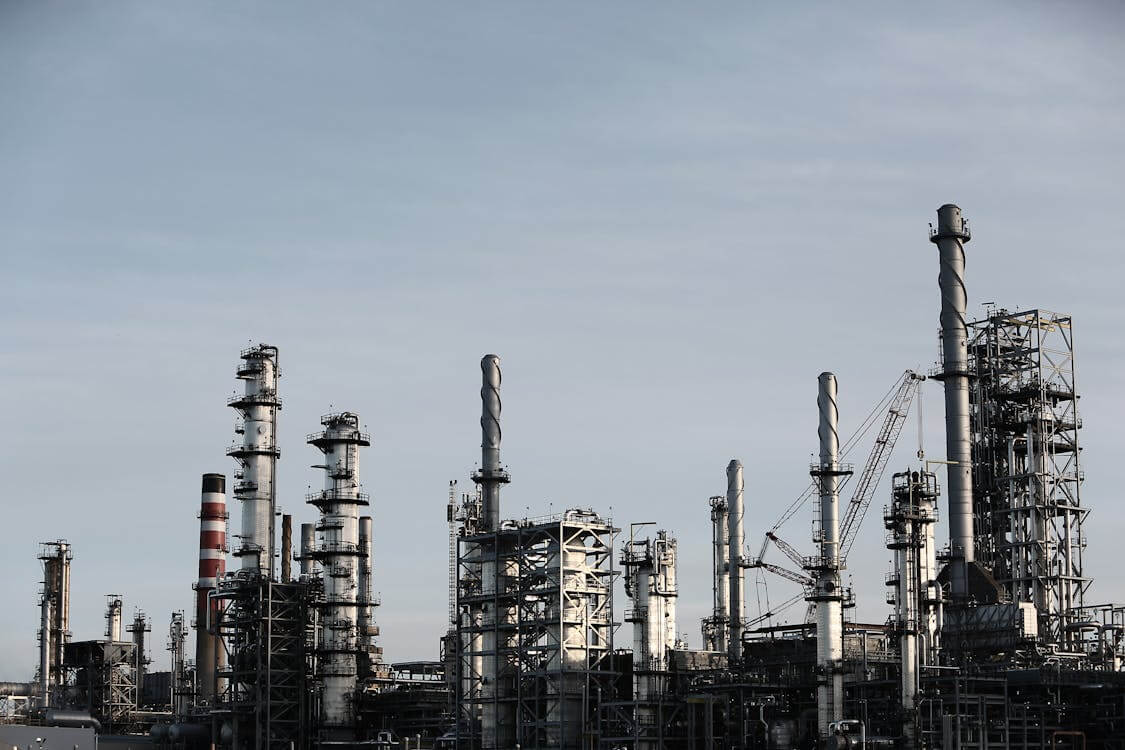
An oil refinery is an industrial plant that transforms or refines crude oil into different usable petroleum products. These petroleum products include:
- Gasoline: High-quality petrol for vehicles.
- Diesel: Fuel for commercial vehicles and transportation.
- Aviation Fuel: Jet fuel for airlines.
- Heating Oil: Fuel for residential and commercial heating systems.
- Petrochemical Feedstocks: Raw materials for chemical manufacturing
These petroleum products are also used for transportation, heating, generating electricity, and feedstock for making chemicals.
Read: Top Largest Oil Refineries in Africa
Complete List of All Refineries Operating in Canada
Canada is home to 16 refineries with a combined refining capacity of nearly 1.9 million barrels of oil daily.
Alberta has the largest share of refining capacity (30%), followed by Ontario and Quebec (21% each). In addition, New Brunswick (17%), Saskatchewan (8%), British Columbia (4%), and Newfoundland (1%).
Furthermore, in 2023, Canadian refineries operated at an average of 89% capacity and consumed 1.6 million barrels of crude oil.
The Irving Oil Refinery in Saint John, New Brunswick, is Canada’s largest refinery, with a capacity of 320,000 barrels per day.
The 16 major crude oil refineries operating in Canada include:
Irving Oil Refinery
- Location: Saint John, New Brunswick,
- Capacity: 320,000 barrels per day
- 2023 capacity: 320,000 barrels per day
- Date of Operation: 1960
- Operator: Irving Oil
- Products: Gasoline, diesel, jet fuel, heating oil, and marine fuels.
- Market Reach & Distribution
- Eastern Canada: The refinery supplies gasoline, diesel, and heating oil via pipelines to Atlantic Canada provinces, including New Brunswick, Nova Scotia, Prince Edward Island, and parts of Quebec.
- Northeastern United States: Irving Oil exports refined products via rail and pipelines to northeastern US states, including New England, Maine, and New York.
- Industrial and Commercial Sectors: Irving Oil supplies industrial clients with refined fuels for their commercial operations.
- Export Markets: Irving Oil exports refined products to Europe and the Caribbean via ships.
- Petrochemicals: The refinery also provides feedstocks to petrochemical industries in Eastern Canada.
The Irving Oil Refinery is the largest oil refinery in Canada and one of the most significant in North America. The refinery primarily serves markets in Canada’s Maritime provinces and the northeastern United States. Situated near the Atlantic Ocean, it provides easy access to crude oil imports from global markets. Thus, it is a strategic hub for supplying fuel to Canada and the northeastern United States.
Jean Gaulin Refinery
- Location: Levis, Quebec
- Capacity: 235,000 barrels per day
- 2023 capacity: 197,000 barrels per day
- Date of Operation: 1960
- Operator: Valero Energy Corporation
- Products: Gasoline, diesel, jet fuel, and heating oil, essential for both domestic consumption and export.
- Market Reach & Distribution
- Quebec and Eastern Canada: Pipelines supply gasoline, diesel, jet fuel, and heating oil to Quebec and the Atlantic provinces.
- Retail Network: Products distributed to Valero’s Ultramar-branded gas stations across Quebec and Eastern Canada.
- Northeastern United States: The refinery exports refined products to northeastern US states via marine means.
- Industrial Clients: Gaulin supplies fuels and feedstocks to industrial clients to support Quebec and Atlantic Canada industries.
- Aviation: Supplies aviation fuel to local airports, contributing to the region’s aviation needs.
Located in Levis, Quebec, and operated by Valero Energy Corporation, the Jean Gaulin Refinery plays a significant role in refining and distributing petroleum products in Eastern Canada. The St Lawrence River, near the refinery, facilitates the transportation of crude oil inputs and refined fuels by marine vessels, pipelines, and road transport.
Strathcona Refinery
- Location: Strathcona County, Alberta
- Capacity: 197,000 barrels per day
- 2023 capacity: 197,000 barrels per day
- Date of Operation: 1975
- Operator: Imperial Oil, a subsidiary of ExxonMobil
- Products: Gasoline, diesel, jet fuel, lubricating oils, petroleum waxes, heavy fuel oil, and asphalt.
- Market Reach & Distribution:
- Retail Fuel Stations: A substantial portion of Strathcona’s gasoline and diesel is sold at Alberta and British Columbia retail stations.
- Commercial and Industrial Sectors: Strathcona supplies fuel directly to various industries in Western Canada.
- Aviation Fuel: Strathcona provides jet fuel to Edmonton International Airport.
- Petrochemicals: Strathcona also supplies feedstocks to nearby petrochemical plants in Alberta.
The Strathcona Refinery, located in Edmonton, Alberta, is another of Canada’s largest refineries, operated by Imperial Oil, a subsidiary of ExxonMobil.
Edmonton Refinery
- Location: Edmonton, Alberta
- Capacity: 146,000 barrels per day
- 2023 capacity: 146,000 barrels per day
- Date of Operation: 1973
- Operator: Suncor Energy
- Products: Gasoline, diesel fuel, jet fuel, aviation gasoline, and asphalt.
- Market Reach & Distribution:
- Retail Fuel Stations: Suncor supplies its products to its network of retail service stations, branded as Petro-Canada.
- Western Canada: The refinery supplies refined products, such as gasoline, diesel, jet fuel, and heating oil, via pipelines primarily to the provinces of Alberta, British Columbia, Saskatchewan, and Manitoba.
- US Markets: The Edmonton Refinery can export refined products to the US and other international markets.
The Edmonton Refinery, located in Strathcona County, Alberta, is a major oil refinery in Canada. Suncor Energy owns and operates the refinery. It is one of the largest refineries in Canada, processing roughly 146,000 barrels of crude oil daily.
Montreal Refinery
- Location: Montreal, Quebec
- Capacity: 137,000 barrels per day
- 2023 capacity: 137,000 barrels per day
- Date of Operation: 1955
- Operator: Suncor Energy
- Products: Gasoline, Diesel fuel, Jet fuel, Heating oil, Asphalt, and Petrochemicals.
- Market Reach & Distribution:
- Eastern Canada: The Montreal Refinery primarily serves the Quebec market and the Atlantic provinces, providing essential products like gasoline, diesel, and jet fuel via pipelines.
- US Markets: The refinery can export refined products to the Northeast United States, including New York, via pipeline & rail.
- Retail fuel Stations: Supports a network of retail fuel stations in Eastern Canada.
- Commercial and Industrial Users: The refinery also serves various commercial and industrial customers, providing fuels for transportation, heating, and other operational needs.
The Montreal Refinery, located in Montreal, Quebec, is a major oil refinery owned and operated by Suncor Energy. It is the largest oil refinery in Eastern Canada. Located in the eastern part of the island of Montreal and on the banks of the St. Lawrence River, it is an essential node in Canada’s energy supply chain. The refinery can process heavy, medium, and light crudes.
Co-op Refinery
- Location: Regina, Saskatchewan
- Capacity: 130,000 barrels per day
- 2023 capacity: 130,000 barrels per day
- Date of Operation: 1955
- Operator: Federated Co-operatives Limited
- Products: Gasoline, diesel, propane, butane, asphalt, and aviation fuel.
- Market Reach & Distribution:
- Prairies: Gasoline, diesel, jet fuel, and heating oil are distributed via pipelines and trucking networks across the Prairie provinces, including Saskatchewan, Manitoba, Alberta, and British Columbia.
- Commercial and Industrial Supply: Supplies refined products to various industries in the Prairies.
- Retail Fuel Stations: Co-op supplies its products to its network of retail service stations, branded as CO-OP.
The Co-op Refinery Complex (CRC) is a major oil refinery in Regina, Saskatchewan, Canada. It is owned and operated by Federated Co-operatives Limited (FCL), one of Canada’s largest retail co-operatives. The CRC makes various petroleum products, including gasoline, diesel fuel, propane, butane, and asphalt. Its strategic location in Regina, Saskatchewan, enables it to serve key markets across the Prairie provinces (Saskatchewan, Alberta, and Manitoba) and parts of British Columbia.
Sarnia Refinery
- Location: Sarnia, Ontario
- Capacity: 120,000 barrels per day
- 2023 capacity: 123,000 barrels per day
- Date of Operation: 1912
- Operator: Imperial Oil, a subsidiary of ExxonMobil
- Products: Gasoline, diesel fuel, jet fuel, heating oil, and asphalt.
- Market Reach & Distribution:
- Ontario & Quebec: The Sarnia refinery is a major supplier of fuels and other petroleum products in Ontario and Quebec, serving large metropolitan areas like Montreal, Toronto, Ottawa, and Hamilton.
- US Midwest and Northeast: The refinery exports refined products to the US Midwest and Northeast regions, like Michigan, Ohio, and New York.
- The refinery also supports the Petrochemical Corridor in Sarnia, supplying petrochemical products that feed into the area’s plastics, rubber, and chemical manufacturing industries.
The Sarnia Refinery, also known as the Imperial Oil Refinery, is a major oil refinery in Sarnia, Ontario, Canada. It is owned and operated by ExxonMobil Canada, a subsidiary of ExxonMobil Corporation. The refinery produces and supplies refined petroleum products across Ontario and Quebec. In addition, the refinery produces petrochemical feedstocks crucial for transportation, manufacturing, and chemicals.
Nanticoke Refinery
- Location: Nanticoke, Ontario
- Capacity: 113,000 barrels per day
- 2023 capacity: 113,000 barrels per day
- Date of Operation: 1973
- Operator: Imperial Oil, a Subsidiary of ExxonMobil
- Products: Gasoline, diesel fuel, jet fuel, heating oil, and various petrochemical products.
- Market Reach & Distribution:
- Regional Focus: The Nanticoke refinery primarily serves the Southern Ontario market.
- Retail Gas Stations: Supplies to numerous Esso-branded gas stations in southern Ontario.
- Commercial Customers: Provides diesel and other fuels to businesses, transportation companies, and industries in the region.
- Aviation Sector: Supplies jet fuel to nearby local & international airports.
The Nanticoke refinery, located in Nanticoke, is a significant oil processing facility owned and operated by Imperial Oil Limited. The refinery meets the energy demand of major cities like Toronto, Hamilton, and London. It is also connected to crucial pipeline networks, such as the Trans Mountain and Enbridge Mainline systems. These two pipelines receive crude oil supplies from Western Canada and distribute refined products to the Southern Ontario region.
Scotford Refinery
- Location: Fort Saskatchewan, Alberta
- Capacity: 100,000 barrels per day
- 2023 capacity: 100,000 per day
- Date of Operation: 1984
- Operator: Shell Canada
- Products: Gasoline, diesel, jet fuel, propane, butane, and petrochemical feedstocks.
- Market Reach & Distribution:
- Western Canada: The refinery primarily serves Western Canada by supplying gasoline, diesel, jet fuel, and petrochemical products to Alberta and its neighboring provinces via pipelines.
- Retail Gas Stations: Supplies to numerous Shell-branded gas stations in the region.
- Petrochemicals: Strathcona also supplies feedstocks to nearby petrochemical plants in Alberta.
The Fort Saskatchewan refinery is a significant oil processing facility owned and operated by Shell Canada. Established in 1984, it forms part of the larger Scotford Complex, which includes a refinery and an upgrader. The refinery’s products are primarily supplied to the Western Canada market through pipelines and rail cars. Its location provides strategic advantages for receiving crude oil and distributing refined products across Canada.
Sarnia Refinery
- Location: Sarnia, Ontario
- Capacity: 85,000 barrels per day
- 2023 capacity: 85,000 barrels per day
- Date of Operation: 1953
- Operator: Suncor Energy
- Products: Gasoline, diesel, jet fuel, asphalt, and petrochemicals.
- Market Reach & Distribution:
- Canada: The refinery supplies refined fuels to retail outlets and commercial & industrial users in Ontario and Eastern Canada through pipelines.
- United States: The refinery exports some of its products to the states in the United States, such as Michigan and Ohio, via trucks and rail.
- Retail stations: The refinery distributes gasoline to numerous Petro-Canada branded retail stations and other independent gas stations in Ontario and parts of the United States.
- Aviation Fuel: The refinery supplies jet fuel to local & international airports in Ontario, Eastern Canada, and parts of the United States.
- Asphalt: The refinery produces asphalt for road construction and maintenance.
- Petrochemicals: Suncor supplies feedstocks for the petrochemical industry.
The Sarnia Refinery, also known as the Suncor Energy Refinery, is a major oil refinery in Sarnia, Ontario, Canada. Suncor Energy owns and operates it.
Corunna Refinery
- Location: Corunna, Ontario
- Capacity: 85,000 barrels per day
- 2023 capacity: 85,000 barrels per day
- Date of Operation: 1948
- Operator: Shell Canada
- Products: Gasoline, diesel, jet fuel, heating oil, Liquefied Petroleum Gas, petrochemicals.
- Market Reach & Distribution:
- Canada: The refinery supplies refined fuels to retail outlets and commercial & industrial users in Ontario through pipelines.
- United States: The refinery exports some of its products to the states in the United States, such as Michigan and Ohio, via trucks and rail.
- Retail stations: The refinery distributes gasoline to numerous Petro-Canada-branded retail stations and other independent gas stations in Ontario.
The Corunna Refinery is a major oil refinery in Corunna, Ontario. It is owned and operated by Shell Canada. Corunna refines crude for Ontario, US, and Great Lakes markets. The refinery is near critical transport routes, including the St. Clair River, rail lines, and highways, for shipping refined products and receiving crude feedstock.
Sturgeon Refinery
- Location: Sturgeon County, Alberta
- Capacity: 79,000 barrels per day
- 2023 capacity: 79,000 barrels per day
- Date of Operation: 2012
- Operator: North West Redwater Partnership
- Products: Gasoline, diesel, naphtha, jet fuel, propane, and heating oil.
- Market Reach & Distribution:
- Canada: The refinery supplies refined fuels to retail outlets and commercial & industrial users in Alberta through pipelines.
The Sturgeon Refinery, located in Alberta, is a crucial refinery operating in Canada. The plant is designed to process Alberta’s oil sands bitumen into refined products like low-sulfur diesel. Operated by the North West Redwater Partnership, the refinery primarily supplies Alberta with refined products.
Burnaby Refinery
- Location: Burnaby, British Columbia
- Capacity: 55,000 barrels per day
- 2023 capacity: 55,000 barrels per day
- Date of Operation: 1935
- Operator: Parkland Corporation
- Products: Gasoline, Diesel, Jet fuel.
- Market Reach & Distribution:
- British Columbia: The Burnaby Refinery primarily supplies gasoline, diesel, and jet fuel to the British Columbia market. Jet fuel is used at domestic and international airports. Diesel is used in BC’s transportation and construction industries. Gasoline is sold at Parkland-branded retail gas stations.
The Burnaby Refinery, located in Burnaby, British Columbia, is a critical Canadian refinery owned by Parkland Corporation. With a capacity of around 55,000 barrels per day, it supplies refined products such as gasoline, diesel, jet fuel, and others to meet British Columbia’s fuel needs.
Lloydminster Refinery
- Location: Lloydminster, Alberta
- Capacity: 29,000 barrels per day
- 2023 capacity: 29,000 barrels per day
- Date of Operation: 1935
- Operator: Cenovus Energy
- Products: Gasoline, diesel, jet fuel, and other petrochemicals.
- Market Reach & Distribution:
- Western Canada: The refinery supplies refined fuels to Alberta and Saskatchewan.
The refinery produces gasoline, diesel, jet fuel, and petrochemical feedstocks. Its strategic location also allows for efficient access to local crude oil supplies and distribution to nearby markets in Alberta, Saskatchewan, and other regions across Canada.
Notable Mentions
- Moose Jaw Refinery: 22,000 per day capacity
- Prince George Refinery: 12,000 per day capacity
Analysis & Opinions
EU Plans to End All Russian Gas Imports by 2027
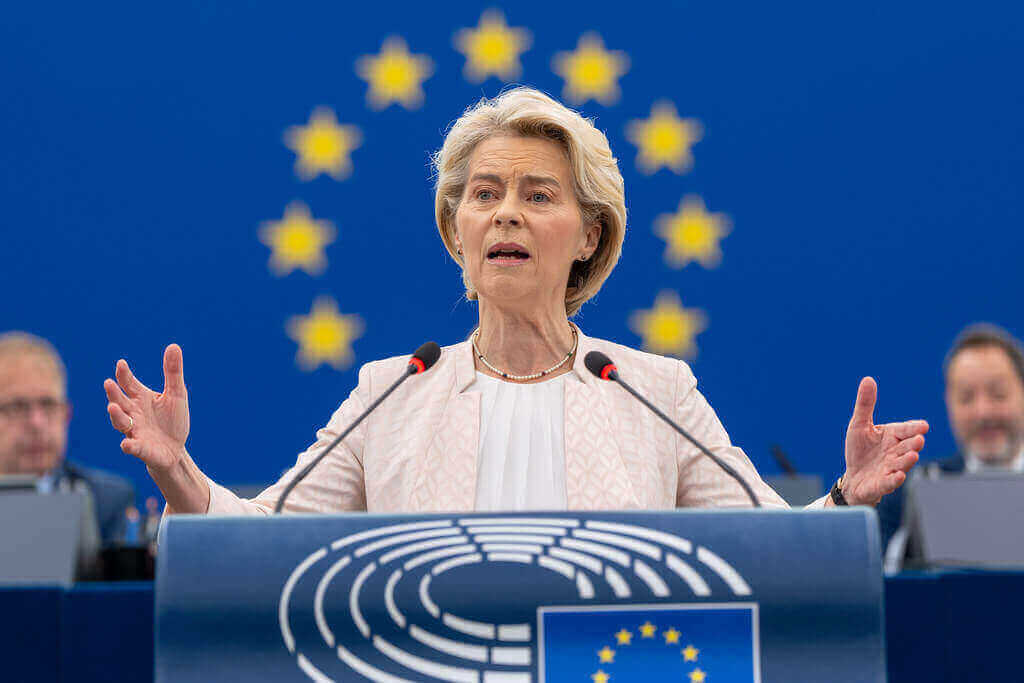
The European Union, on May 6, unveiled plans to enact legislation to end all Russian gas imports by 2027.
The European Commission’s plan consists of two steps. First, it would end new and existing short-term spot contracts with Russian gas suppliers by the end of 2025. Second, it will ban all remaining imports by the end of 2027.
The legislation aims to end the bloc’s gas dependence on Russia. By June, the EU Commission will propose legal measures to phase out the EU’s imports of all Russian gas and liquefied natural gas.
The EU initially enacted a ban on Russian oil in late 2022 in response to Moscow’s invasion of Ukraine in February 2022. Since then, it has also sought to wean itself off Russian gas supplies. Although imports via pipeline have plunged sharply, several European countries still buy Russian liquefied natural gas (LNG). Therefore, the EU wants to completely shut off the tap with this new plan.
The European Union initially postponed unveiling the plan, which still requires permission from member states. The bloc is waiting to see whether talks between Russia and the United States would produce a deal to end the Russia-Ukraine war.
Read: Russia and China in Talks on Stalled Power of Siberia 2 Pipeline
EU-Russia Gas Relations
Russia has been the European Union’s largest gas supplier for decades.
In 2021, the European Union imported 155 billion cubic metres of gas from Russia. The volume accounts for roughly 45% of EU gas imports and close to 40% of its total gas consumption.
Russia exports its gas to the EU via pipelines such as Nord Stream, Yamal-Europe, and Brotherhood.
Post-invasion, Russia supplied 17%-19% of the EU’s gas demand via the TurkStream pipeline and LNG shipments, down from roughly 45% before 2021.
In 2024, the EU still imported 52 BCM of gas from Russia—32 BCM via pipeline and 20 BCM as LNG—representing 19% of total gas imports.
By late 2024, Russian gas supplies had dropped to about 19%. The EU has largely replaced Russian gas supplies with LNG from the US (17%), Qatar (4%), and Norwegian pipeline gas (34%). However, the EU now want a complete decoupling from Russia.
Although overall EU gas imports from Russia have fallen since the 2022 invasion of Ukraine, imports of Russian LNG and pipeline gas rose by 19% in 2024.
Key Components of the EU’s Plan to Halt Russian Gas Imports
The European Commission will propose legislation in June 2025 to phase out the EU’s imports of all Russian gas and liquefied natural gas by the end of 2027. The EU’s legal measures will:
- End of 2025: End the bloc’s new contracts with Russian gas suppliers (LNG and pipeline gas)
- 2026-2027: Phase out existing short-term spot contracts with Russia (pipeline gas and LNG).
- End of 2027: End all Russian gas imports into the European Union.
Therefore, the EU plans to diversify its gas imports by expanding imports from countries such as the United States (LNG), Qatar (LNG), Algeria (pipeline gas), and others.
To achieve energy independence from Russia, the bloc plans to spend €300 billion under the Repower Europe master plan. With about €72 billion from grants and €225 billion in loans, expenditure requirements include:
- €113 billion allocated for renewables and hydrogen infrastructure (€86 billion for renewables and €27 billion for hydrogen).
- €37 billion to increase biomethane production.
- €29 billion to improve the power grid.
Others include expanded gas storage facilities and upgrades of interconnectors to enable gas flow from the West to landlocked Eastern states like Slovakia and Hungary. Furthermore, the EU will construct additional LNG import terminals to receive LNG supplies from the US, Qatar, and other suppliers.
EU Ban to Benefit the United States
The European Commission will propose new legislation in June to phase out the EU’s imports of all Russian gas by the end of 2027.
The bloc vowed to terminate its energy relations with Russia after the Kremlin invaded Ukraine in February 2022.
The US is pushing Russia for a cease-fire and peace deal with Ukraine. If achieved, this could reopen the door for Russian oil and gas exports back to the EU. However, with a peace agreement, the EU may push ahead to limit its gas imports from Russia.
Phasing out Russian supplies would allow the European Union to purchase more LNG from the United States. The EU and President Trump have floated the idea of increasing US LNG imports to the EU to settle their trade disputes.
The United States is already the European Union’s largest LNG supplier, making up 45% of the market.
Therefore, the US government will laud the EU’s plan. The ban allows American LNG suppliers to deepen ties with the EU, reinforcing NATO’s strategic cohesion.
Europe – Main Customers of Russia’s LNG Exports 2024
Russia’s LNG exports in 2024 reached a record high of 33.6 million tons, a 4% increase from the 2023 volume of 32.9 million tons.
European countries remain the largest importers of Russia’s LNG, accounting for 52% of Russia’s total LNG exports, about 17.4 million tons.
In 2024, France (6.3 million tons), Spain (4.8 million tons), Belgium (4.4 million tons), and the Netherlands (1.3 million tons) were the largest buyers of Russian LNG in the EU. LNG imports from Russia enter Europe primarily through France, Belgium, and Spain.
Russia’s surging LNG exports in 2024 underscore complications in the EU’s effort to reduce its reliance on Russian fossil fuels.
Thus, Europe remains hooked on Russian gas and has been unable to find alternative energy sources.
Despite these efforts, Europe’s imports of Russian LNG, which is largely not subject to sanctions, have soared to record levels in 2024.
Member States’ Challenges and Mitigation Strategies
After months of hesitation and rising criticism over soaring LNG imports from Russia, the European Commission announced on May 6 its roadmap to eliminate Russian fossil fuels by 2027.
Member states will react differently to the Commission’s plan to end all energy imports from Russia by the end of 2027
The EU has imposed sanctions on Russian coal and most oil imports. However, it did not impose sanctions on gas due to opposition from Slovakia and Hungary. Both countries import 80% of their oil and gas needs from Russia.
Also, France would face a more serious impact since it operates five terminals for its delivery in Europe. According to the Institute for Energy Economics and Financial Analysis, France increased its Russian LNG imports by 81% between 2023 and 2024.
While Germany has halted direct pipeline gas imports from Russia, between 3% and 9.2% of its gas supply still originates from Russia. Germany bought 58 cargoes of Russian LNG from the French port of Dunkirk in 2024, six times more than in 2023.
| Country | Expected Challenges | Mitigation Strategies |
| Germany | Industrial gas demand | LNG terminals (Brunsbüttel, Wilhelmshaven), green hydrogen push, increased gas storage |
| Poland | Already halted Russian imports via pipeline | Baltic Pipe from Norway, LNG via Świnoujście terminal, strong domestic support |
| Hungary | High dependence, limited alternatives, political resistance | Dependence on TurkStream, gradual transition with EU funding possible |
| Slovakia | Landlocked, few alternatives, heavy industry reliance on Russia’s oil & gas | Reverse flow from Czech Republic and Austria, interconnectors |
| Italy | Industrial sector dependency, LNG capacity constraints | Algerian gas imports (via TransMed), LNG expansion (Piombino FSRU) floating storage and regasification unit |
| France | Dependency mostly via LNG | Diversification via LNG (Dunkerque), strong nuclear and renewables mix |
| Belgium | Price impacts on consumers | Zeebrugge LNG terminal, gas grid interconnectivity, renewables investment |
| Spain | Geographic separated from eastern supply | Strong LNG infrastructure (Barcelona, Cartagena), pipeline connections to Algeria |
| Lithuania | None – already transitioned | LNG via Klaipėda terminal, regional gas cooperation |
| Latvia | Reliance on Russian storage and gas routes | Baltic connector interconnector, regional LNG swaps |
Why the EU’s Push to End Russian Gas Will Be difficult
The EU Commission’s plan to eliminate all gas imports from Russia will encounter significant commercial, political, and operational challenges.
European energy giants like France’s TotalEnergies and Engie have long-term Russian gas contracts. Invoking this would be challenging without exposing them to penalties or arbitration. European buyers have “take-or-pay” contracts with Gazprom. Therefore, buyers who decline deliveries would pay for much of the contracted gas volumes.
The EU is the world’s biggest buyer of Russian LNG, ahead of China, Japan, and South Korea.
Amid high LNG demand, European buyers typically pay more than other global markets to divert LNG to their ports.
Once the block halts gas imports from Russia, European buyers will continue to pay premium prices for suppliers to divert cargoes to their ports. This will lead to intense criticism from Asia.
| Challenge Category | Description | Countries Most Affected |
| Infrastructure Gaps |
|
Hungary, Slovakia, Austria, Czech Republic |
| High Financial Costs |
|
All EU member states |
| Time Constraints |
|
All EU states |
| Industrial Dependence |
|
Germany, Italy, Netherlands, Austria |
| Political Division |
|
Hungary, Bulgaria, Slovakia, Austria |
| Global LNG Competition |
|
All LNG-importing EU states |
| New Supplier Risks |
|
Southern and Central EU states |
Analysis & Opinions
Top Largest Oil Refineries in Africa
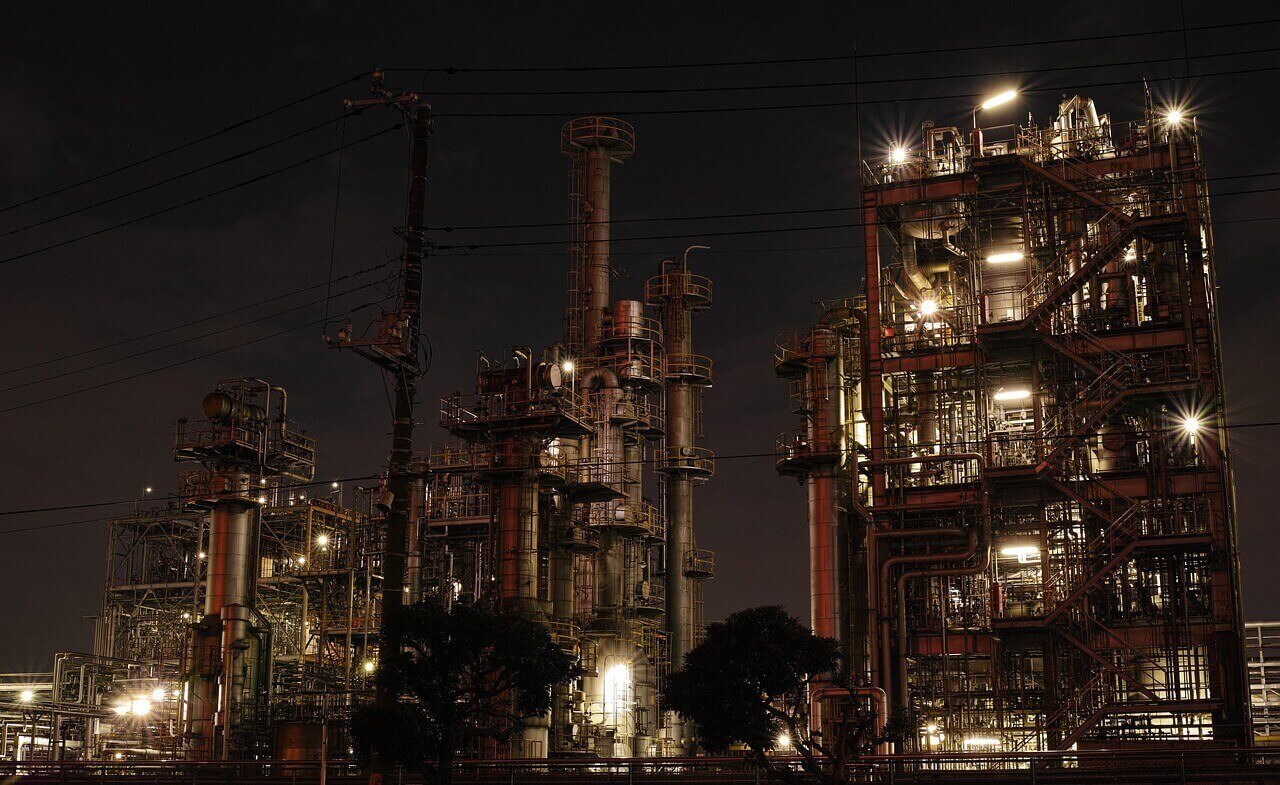
Africa is home to several large oil refineries crucial in meeting the continent’s growing energy demand and supporting economic development. These refineries process crude oil into various petroleum products, such as gasoline, diesel, jet fuel, and LPG, which are critical for transportation, industrial operations, and household use.
Many of Africa’s largest refineries are concentrated in major oil-producing nations like Nigeria, Egypt, South Africa, and Angola. They leverage their access to vast crude reserves.
The largest refineries are characterized by:
- High Processing Capacity: Ranging from 100,000 to over 600,000 barrels per day.
- Modern Technologies: Designed to produce cleaner fuels in compliance with international environmental standards.
- Strategic Locations: Proximity to oil fields, ports, and significant population centres.
Africa achieved an oil refinery capacity of about 4.1 million barrels per calendar day in 2023.
Read: Complete List of All Refineries Operating in the UK
Top Largest Oil Refineries in Africa
Below are the largest oil refineries spanning the African continent:
Dangote Refinery
- Location: Lekki Free Trade Zone, Lagos State, Nigeria
- Capacity: 650,000 barrels per day
- Operator: Dangote Group
Located in the Lekki Free Trade zone in Lagos state, Nigeria, the Dangote Refinery is the largest in Africa by capacity. The refinery produces a wide range of refined products for domestic use and export markets, including petrol, diesel, jet fuel, and petrochemical derivatives.
Skikda Refinery
- Location: Skikda, Algeria
- Capacity: 355,000 barrels per day
- Operator: Sonatrach, Algeria’s state-owned oil and gas company
Located in the Port of Skikda along the Mediterranean Sea and operated by the Libyan National Oil Corporation, the Skikda Refinery is one of the largest refineries in Algeria and Africa. The facility has a capacity of 355,000 barrels per day. It produces various petroleum products such as gasoline, jet fuel, diesel, LPG, and kerosene. Positioned near the Port of Skikda, the refinery enables efficient distribution of refined products to domestic markets and export destinations, mainly Europe and North Africa.
Ras Lanuf Refinery
- Location: Ras Lanuf, Libya
- Capacity: 220,000 barrels per day
- Operator: Libyan National Oil Corporation (NOC)
Located in the port city of Ras Lanuf and operated by the Libyan National Oil Corporation (NOC), it is one of the largest refineries in Libya and Africa. The facility is part of a larger petrochemical complex that includes an ethylene plant and a polyethene plant. The refinery has a capacity of 220,000 barrels per day. It produces various petroleum products such as gasoline, jet fuel, naphtha, and kerosene. Also, it produces petrochemicals like ethylene and propylene. The refinery has faced several challenges; political and military unrest in Libya has frequently disrupted operations. The refinery has been shut down and restarted several times in recent years.
Port Harcourt Refinery
- Location: Port Harcourt, Rivers State, Nigeria
- Capacity: 210,000 barrels per day
- Old Port Harcourt Refinery: With a capacity of 60,000 barrels per day
- New Port Harcourt Refinery: With a capacity of 150,000 barrels per day
- Operator: Nigerian National Petroleum Company (NNPC)
The Port Harcourt Refinery is one of Nigeria’s largest and most important oil refineries. It is one of the four major refineries in Nigeria, owned and operated by the Nigerian National Petroleum Company Limited (NNPC).
Durban Refinery
- Location: Durban, KwaZulu-Natal, South Africa
- Capacity: 180,000 barrels per day
- Operator: SAPREF (jointly owned by Shell South Africa and BP Southern Africa)
The Durban Refinery, also known as SAPREF, is one of the largest oil refineries in South Africa and Africa. Located in the port city of Durban, KwaZulu-Natal province, it is owned and operated by a joint venture between Shell and BP. SAPREF exports refined petroleum products to various African countries, including Zimbabwe, Mozambique, Namibia, and the Indian Ocean islands. However, SAPREF has faced challenges recently due to ageing infrastructure and increased import competition. In 2022, the refinery was temporarily shut down due to operational issues.
Middle East Oil Refinery
- Location: Alexandria, Egypt
- Capacity: 160,000 barrels per day
- Operator: Egyptian General Petroleum Corporation
The Middle East Oil Refinery (MIDOR) is one of the most advanced oil refineries in the Middle East and Africa, and it is strategically located in Alexandria, Egypt. Established in 1994, the Egyptian General Petroleum Corporation owns and operates the refinery. The facility produces many high-quality petroleum products, including gasoline, diesel, jet fuel, LPG, and naphtha. Also, the refinery has a processing capacity of about 160,000 barrels per day, with ongoing expansions aimed at boosting this to 200,000 bpd.
Cairo Mostorod Refinery
- Location: Mostorod, North Cairo, Egypt
- Capacity: 142,000 barrels per day
- Operator: Egyptian General Petroleum Corporation
The Cairo Mostorod Refinery is one of Egypt’s and Africa’s largest and most important oil refineries. Strategically located in the Mostorod area north of Cairo, Egypt, it is operated by the Egyptian General Petroleum Corporation (EGPC) and has a processing capacity of around 142,000 barrels per day.
El Nasr Refinery
- Location: Suez, Egypt
- Capacity: 132,000 barrels per day
- Operator: Egyptian General Petroleum Corporation
The El Nasr Refinery is one of the largest refineries in Africa, located in Suez, Egypt. Operated by the Egyptian General Petroleum Corporation (EGPC), it processes both light and heavy crude oil to produce critical products such as gasoline, diesel, kerosene, jet fuel, liquefied petroleum gas (LPG), and fuel oil. These products are distributed throughout Egypt to meet the demands of the transportation, industrial, and residential sectors.
Warri Refinery
- Location: Warri, Delta State, Nigeria
- Capacity: 125,000 barrels per day
- Operator: Nigerian National Petroleum Company (NNPC)
The Warri Refinery is one of Nigeria’s largest and most important oil refineries. It is one of the four major refineries in Nigeria, owned and operated by the Nigerian National Petroleum Company Limited (NNPC). However, The refinery has often operated below its installed capacity due to frequent maintenance shutdowns, ageing infrastructure, extended outages, and technical issues.
Zawiya Refinery
- Location: Zawiya, Libya
- Capacity: 120,000 barrels per day
- Operator: Libyan National Oil Corporation (NOC)
Located in Zawiya and operated by the Libyan National Oil Corporation (NOC), it is one of the largest refineries in Libya and Africa. The refinery has a capacity of 120,000 barrels per day. It produces various petroleum products such as gasoline, jet fuel, naphtha, and kerosene. However, the refinery has faced several challenges; political and military unrest in Libya has frequently disrupted operations.
Alexandria El Mex Refinery
- Location: El Mex area, Alexandria, Egypt
- Capacity: 117,000 barrels per day
- Operator: Alexandria Petroleum Company, a subsidiary of Egyptian General Petroleum Corporation.
The El Mex Refinery, located in Alexandria, Egypt, is one of the country’s key refining facilities and one of the top refineries in Africa. Operated by the Alexandria Petroleum Company, the refinery processes domestic and imported crude oil to produce various refined petroleum products, including gasoline, diesel fuel, jet fuel, and asphalt. Its strategic location near Alexandria Port allows for efficient crude importation and product exportation.
-

 Business News5 months ago
Business News5 months agoNigeria’s Oil and Gas Reserves 2025 Reach 37 billion barrels & 210.5 TCF
-

 Analysis & Opinions5 months ago
Analysis & Opinions5 months agoTop Oil Producing States in Nigeria
-
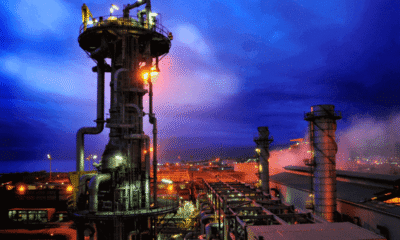
 Gas4 months ago
Gas4 months agoNLNG Enters a Gas Supply Deal with Seplat Energy
-
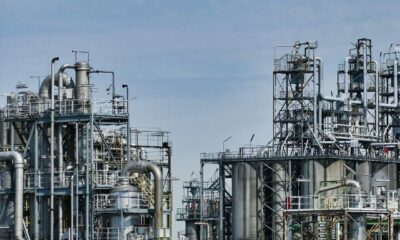
 Analysis & Opinions5 months ago
Analysis & Opinions5 months agoComplete List of All Refineries Operating in the UK
-
 Oil5 months ago
Oil5 months agoCrude Oil Prices May 5, 2025: Brent & WTI Rates
-
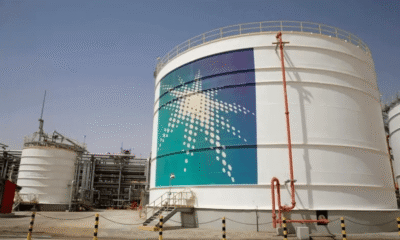
 Oil5 months ago
Oil5 months agoSaudi Aramco Increases June Oil Prices For Asia Amid OPEC+ Supply Hike








